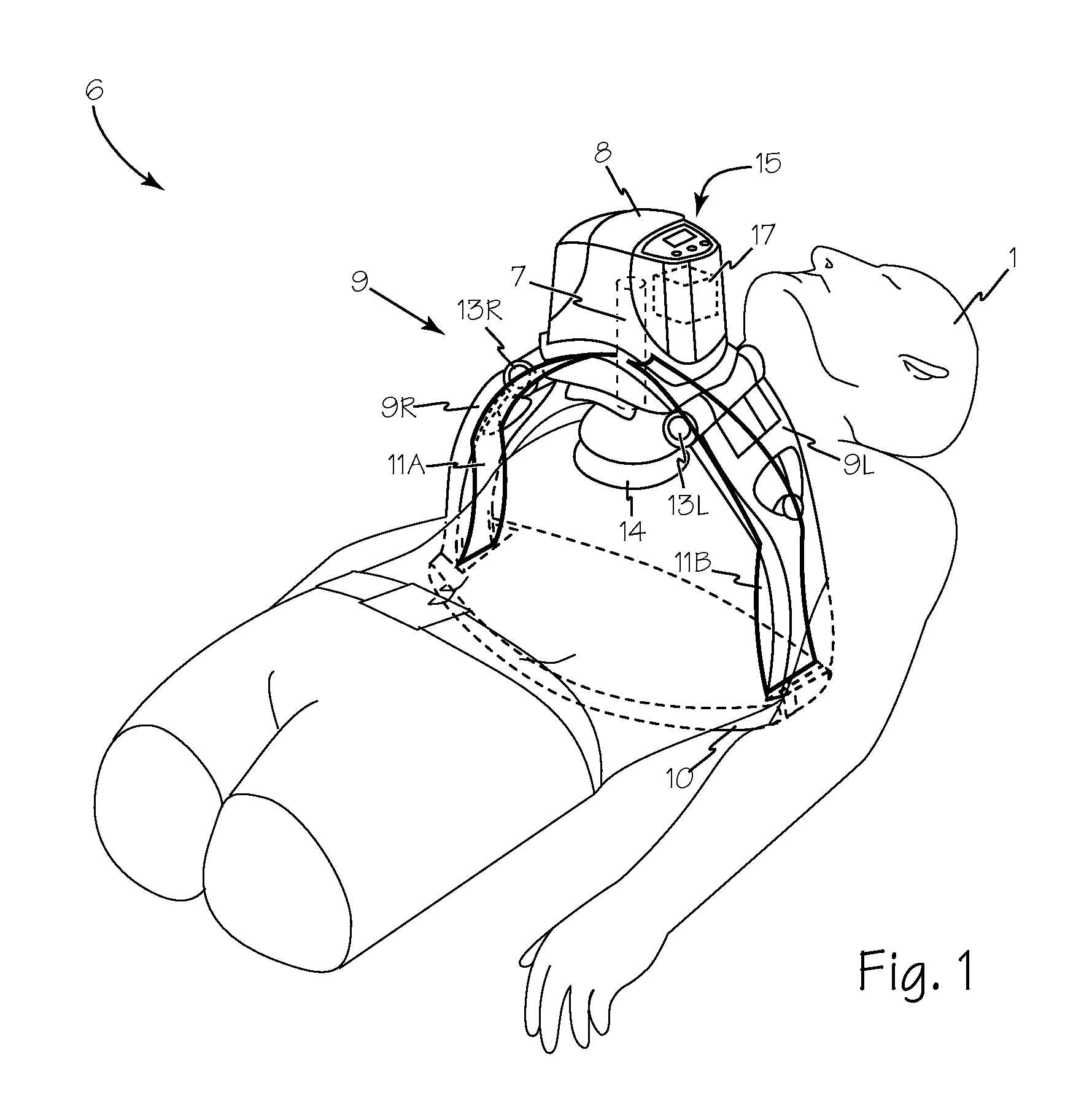Chest Compression Device
a chest compression and chest compression technology, applied in the field of chest compression devices for cardiopulmonary resuscitation (cpr) and chest compression, can solve the problems of lateral spreading of the thorax and the effectiveness of automated chest compressions
- Summary
- Abstract
- Description
- Claims
- Application Information
AI Technical Summary
Benefits of technology
Problems solved by technology
Method used
Image
Examples
Embodiment Construction
[0014]FIGS. 1 illustrates the chest compression device fitted on a patient 1. The chest compression device 6 applies compressions with the piston 7. The piston is disposed within compression unit 8 which is supported over the patient with a frame or gantry 9 having two legs 9L and 9R fixed to a backboard 10. Compression unit 8 is connected to legs 9L and 9R at hinges 13R and 13L. Leaf springs 11A and 11B are operably connected between piston 7 and either backboard 10 or to support legs 9L and 9R through hinges 13R and 13L. Springs 11A and 11B may be formed of a single layer of material or they may be formed of two or more layers or two or more parallel springs.
[0015]When disposed about the patient, the frame extends over thorax 2 of the patient so that the piston is disposed apposing sternum 2A to contact the patient's chest directly over the sternum, to impart compressive force on the sternum of the patient as shown in FIG. 2. Piston 7 may include a removable compression pad 14 ada...
PUM
 Login to View More
Login to View More Abstract
Description
Claims
Application Information
 Login to View More
Login to View More - R&D
- Intellectual Property
- Life Sciences
- Materials
- Tech Scout
- Unparalleled Data Quality
- Higher Quality Content
- 60% Fewer Hallucinations
Browse by: Latest US Patents, China's latest patents, Technical Efficacy Thesaurus, Application Domain, Technology Topic, Popular Technical Reports.
© 2025 PatSnap. All rights reserved.Legal|Privacy policy|Modern Slavery Act Transparency Statement|Sitemap|About US| Contact US: help@patsnap.com



